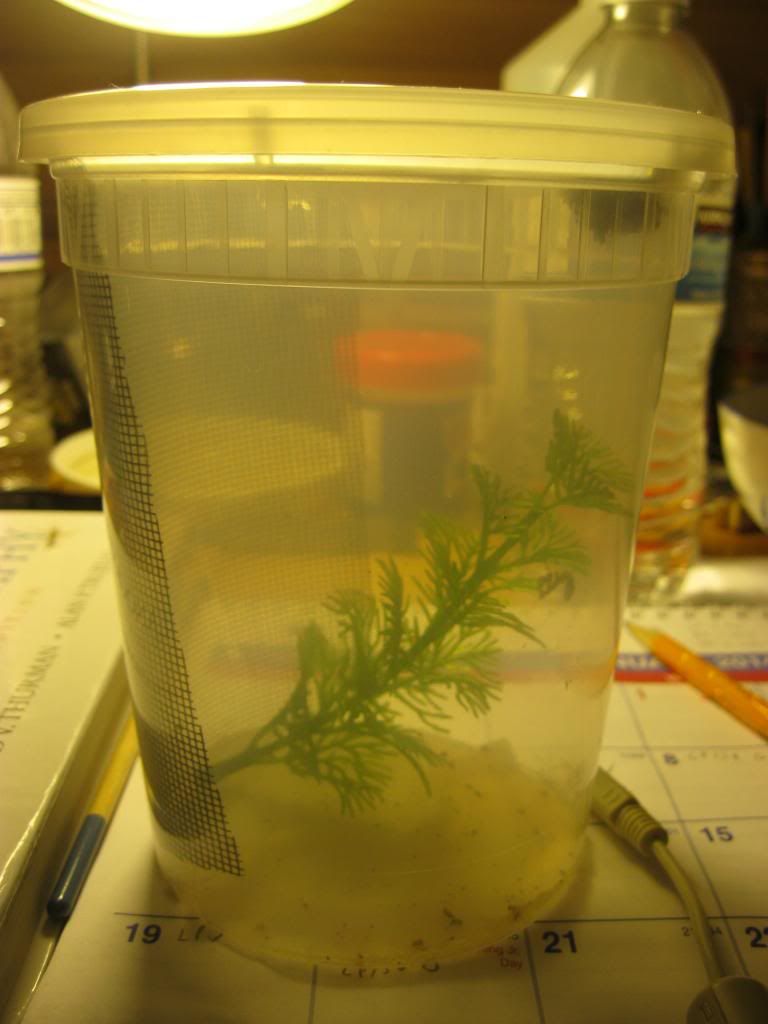Sceliphron
Member
- Joined
- Sep 3, 2013
- Messages
- 9
- Reaction score
- 0
I am very new to keeping mantises and have been experiencing some extremely high mortality rates with my creo nymphs: out of the 9 L3 nymphs I started with I have already lost 5 since the past two months, 3 L3 and 2 L4s.
They started out on FFFs, then as they molted into L4 ate wild-caught hoverflies, houseflies, and greenbottle flies for a week, and are now eating captive-eclosed houseflies. They have also eaten honey and bee pollen on occasion. They are misted once every 2-3 days. Below is a picture of an individual mantis's setup (the lid is a coarse fabric mesh). All the enclosures are kept inside an large, shallow, open cardboard box, so they are relatively dark throughout the day. As it is winter here, temperatures have been relatively low, around 60-70, and occasionally drop below 60 on an especially cold night.
The last creo to (almost) die was today, and which I took it out for inspection, the mantis suddenly underwent some violent spasms for a second or two before returning to a lethargic, almost lifeless stage, which it is currently in. It is showing no signs of mismolt, starvation, or injury.
Since it recently ate a hoverfly, I'm thinking pesticides, but does anyone have any ideas? Thanks!

They started out on FFFs, then as they molted into L4 ate wild-caught hoverflies, houseflies, and greenbottle flies for a week, and are now eating captive-eclosed houseflies. They have also eaten honey and bee pollen on occasion. They are misted once every 2-3 days. Below is a picture of an individual mantis's setup (the lid is a coarse fabric mesh). All the enclosures are kept inside an large, shallow, open cardboard box, so they are relatively dark throughout the day. As it is winter here, temperatures have been relatively low, around 60-70, and occasionally drop below 60 on an especially cold night.
The last creo to (almost) die was today, and which I took it out for inspection, the mantis suddenly underwent some violent spasms for a second or two before returning to a lethargic, almost lifeless stage, which it is currently in. It is showing no signs of mismolt, starvation, or injury.
Since it recently ate a hoverfly, I'm thinking pesticides, but does anyone have any ideas? Thanks!












































